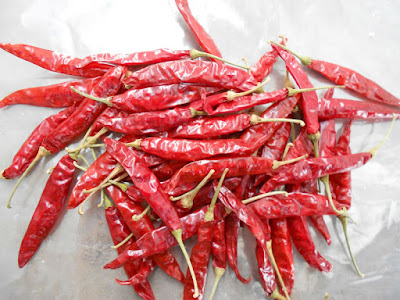Peanuts are popularly used as seed oil in India. Since they are obtained from the ground, they are also
sometimes called as groundnuts and also known as ‘Mungfali‘ in Hindi, ‘Pallelu‘ in Telugu, ‘Kadalai‘ in Tamil, ‘Nilakkadala‘ in Malayalam, ‘Kadale kaayi‘ in Kannada, ‘Singdana‘ in Gujarati and ‘Shengdaane‘ in Marathi. Peanuts are easily available round the year and almost everywhere in India. They are easily available round the year and almost everywhere in India.
Peanuts are also taken as snacks in many households especially in India. In reality, peanuts are actually legumes. But since they have all the properties of nuts like almonds, cashew nuts, etc., these are also included in the family of nuts.
1. Rich in Energy:
Peanuts contain vitamins, minerals, nutrients and anti-oxidants and thus are rich energy sources.
2. Cholesterol:
It lowers bad cholesterol and increases good cholesterol in the body. Peanuts contain mono-unsaturated fatty acids especially oleic acid that prevents coronary diseases.
3. Growth:
Peanuts are rich in proteins. The amino acids present in them are good for proper growth and development of body.
4. Fights Stomach Cancer:
Poly-phenolic anti-oxidants are present in the peanuts in high concentrations. P-Coumaric acid has the ability to reduce the risk of stomach cancer by reducing the productions of carcinogenic nitrous-amines.
5. Fights against Heart Diseases, Nerves Diseases, Alzheimer’s Disease, and Infections:
A poly-phenolic anti-oxidant, Resveratrol present in peanuts prevents heart diseases, cancers, nervous diseases and viral or fungal infections efficiently.
6. Reduces the Chances of Stroke:
The anti-oxidant, Resveratrol in peanuts prevents heart strokes by increasing the production of nitric oxide.
7. Anti-oxidants:
Peanuts contain anti-oxidants in high concentrations. These anti-oxidants become more active when peanuts are boiled. There is a 2-fold increase in Biochanin-A and 4-fold increase in Genistein content. These reduce the damage done by free radicals produced in the body.
8. Protects Skin:
Vitamin E in peanuts helps in maintaining the integrity of cells of mucous membrane and the skin. This protects them from free radicals which cause great damage.
9. Low Risk of Weight Gain:
Women who eat peanuts or peanut butter at least twice a week are less likely to be susceptible to obesity than those who don’t. If you eat peanut butter every morning with bread slices, you have less chances of gaining weight.
10. Colon Cancer:
Peanuts can reduce colon cancer especially in women. Eating at least 2 spoons of peanut butter twice a week can reduce the risk of colon cancer in women by up to 58% and in men by up to 27%. This is one of the best benefits of peanuts for women.
sometimes called as groundnuts and also known as ‘Mungfali‘ in Hindi, ‘Pallelu‘ in Telugu, ‘Kadalai‘ in Tamil, ‘Nilakkadala‘ in Malayalam, ‘Kadale kaayi‘ in Kannada, ‘Singdana‘ in Gujarati and ‘Shengdaane‘ in Marathi. Peanuts are easily available round the year and almost everywhere in India. They are easily available round the year and almost everywhere in India.
Peanuts are also taken as snacks in many households especially in India. In reality, peanuts are actually legumes. But since they have all the properties of nuts like almonds, cashew nuts, etc., these are also included in the family of nuts.
Health Benefits Of Peanuts:
Here are some of the most well-known health benefits of Peanuts.1. Rich in Energy:
Peanuts contain vitamins, minerals, nutrients and anti-oxidants and thus are rich energy sources.
2. Cholesterol:
It lowers bad cholesterol and increases good cholesterol in the body. Peanuts contain mono-unsaturated fatty acids especially oleic acid that prevents coronary diseases.
3. Growth:
Peanuts are rich in proteins. The amino acids present in them are good for proper growth and development of body.
4. Fights Stomach Cancer:
Poly-phenolic anti-oxidants are present in the peanuts in high concentrations. P-Coumaric acid has the ability to reduce the risk of stomach cancer by reducing the productions of carcinogenic nitrous-amines.
5. Fights against Heart Diseases, Nerves Diseases, Alzheimer’s Disease, and Infections:
A poly-phenolic anti-oxidant, Resveratrol present in peanuts prevents heart diseases, cancers, nervous diseases and viral or fungal infections efficiently.
6. Reduces the Chances of Stroke:
The anti-oxidant, Resveratrol in peanuts prevents heart strokes by increasing the production of nitric oxide.
7. Anti-oxidants:
Peanuts contain anti-oxidants in high concentrations. These anti-oxidants become more active when peanuts are boiled. There is a 2-fold increase in Biochanin-A and 4-fold increase in Genistein content. These reduce the damage done by free radicals produced in the body.
8. Protects Skin:
Vitamin E in peanuts helps in maintaining the integrity of cells of mucous membrane and the skin. This protects them from free radicals which cause great damage.
9. Low Risk of Weight Gain:
Women who eat peanuts or peanut butter at least twice a week are less likely to be susceptible to obesity than those who don’t. If you eat peanut butter every morning with bread slices, you have less chances of gaining weight.
10. Colon Cancer:
Peanuts can reduce colon cancer especially in women. Eating at least 2 spoons of peanut butter twice a week can reduce the risk of colon cancer in women by up to 58% and in men by up to 27%. This is one of the best benefits of peanuts for women.


